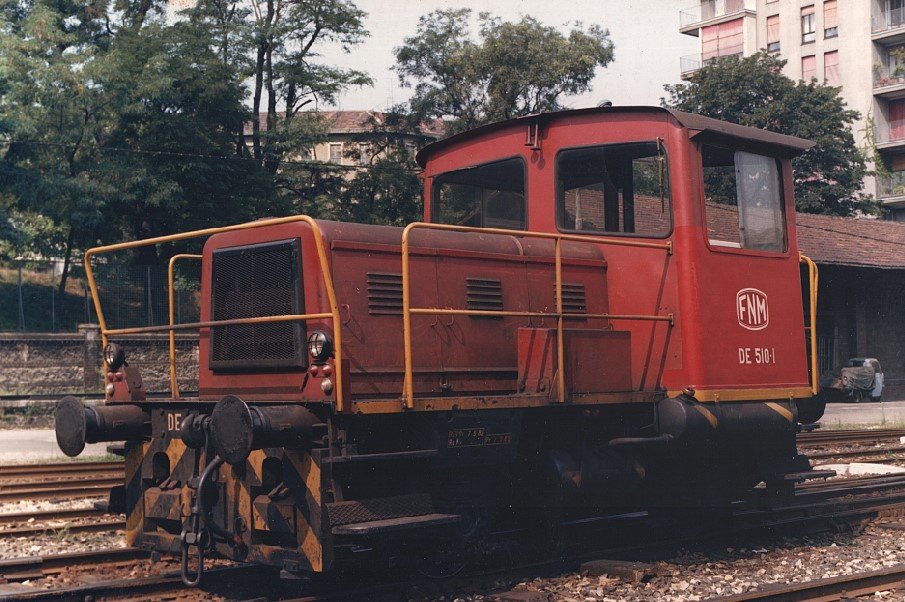In the ‘50s and ’60s, the need to replace the old steam locomotives for the shunting operations of passenger coaches in particular at the Piazzale Cadorna yard, led FNM in 1967 to hire and subsequently purchase two small 2-axle electric diesel shunting locomotives built by TIBB. Their size and performance were well suited to shunting passenger coaches in the non-electrified shunting yard at Cadorna Station. Registered as DE1 and DE2 and later DE 510.1 and 2, they operated in Milan until the use of end cars on standard trains ceased. These were locomotives weighing approximately 18 tons, with a driving cab on one side and engine compartment on the other, fitted with platforms at each end for both access and for shunting staff. Fiat 203 A diesel engine, fitted to a GCNJ 114 electric generator which powered 2 electric motors on the TIBB GDTM 1303 axles. Of these small locomotives, one still exists at the MILS museum in Saronno.
DE 500 and DE 510

- Progettazione: 1969 (DE 500)
- Costruzione: 1971-1975
- Esercizio: 1971-Presente
- Massa in servizio: 47.800 kg
- Rodiggio: Bo’ Bo’
- Ruote motrici Ø: 920 mm
- Costruttore: TIBB – Vado L.re
- Lunghezza fuori tutto: 10.440 mm
- Larghezza: 3.000 mm
- Generatori: TIBB GCNJ 436-a
- Potenza Motori: 191-198 Kw
- Numero motori diesel: N. 2 FIAT
- Altezza massima: 4.100 mm
- Interperno carrelli: 5.200 mm
- Passo carrelli: 2.200 mm
- Rapporto di trasmissione: 13/75
- Velocita massima: 75 Km/h
- Freno: aria compressa
- Design date: 1969 (DE 500)
- Build date: 1971-1975
- Service date: 1971-Present
- Service mass: 47,800 kg
- Wheel arrangement: Bo-Bo
- Diameter of the driving wheels: 920 mm
- Builder: TIBB – Vado L.re
- Overall length: 10,440 mm
- Width: 3,000 mm
- Generators: TIBB GCNJ 436-a
- Engine power: 191-198 Kw
- Number of diesel engines: N. 2 FIAT
- Maximum height: 4,100 mm
- Distance between bogie centres: 5,200 mm
- Bogie wheelbase: 2,200 mm
- Gear ratio: 13/75
- Maximum speed: 75 Km/h
- Braking system: compressed air
Between 1971 and 1974, FNM purchased 5 new locomotives built by TIBB. These were electric diesel bogie locomotives which replaced the steam locomotives pulling goods trains on the Castellanza-Cairate line until it closed down in 1977. These locomotives subsequently continued shunting services on the few non-electrified sections and yards and, following the decommissioning of the electric line, also on the Saronno-Seregno line and industrial sidings. They were locomotives with a central cabin and housings on each side. These were also equipped with gangways and platforms for access to the cabin and for the shunting staff. The housings contained the motors and power generators for the 4 TIBB GDTM 0410 electric motors. The bogies had a box structure in welded sheet metal with rubber block primary suspension and coil spring and hydraulic damper secondary suspension.

